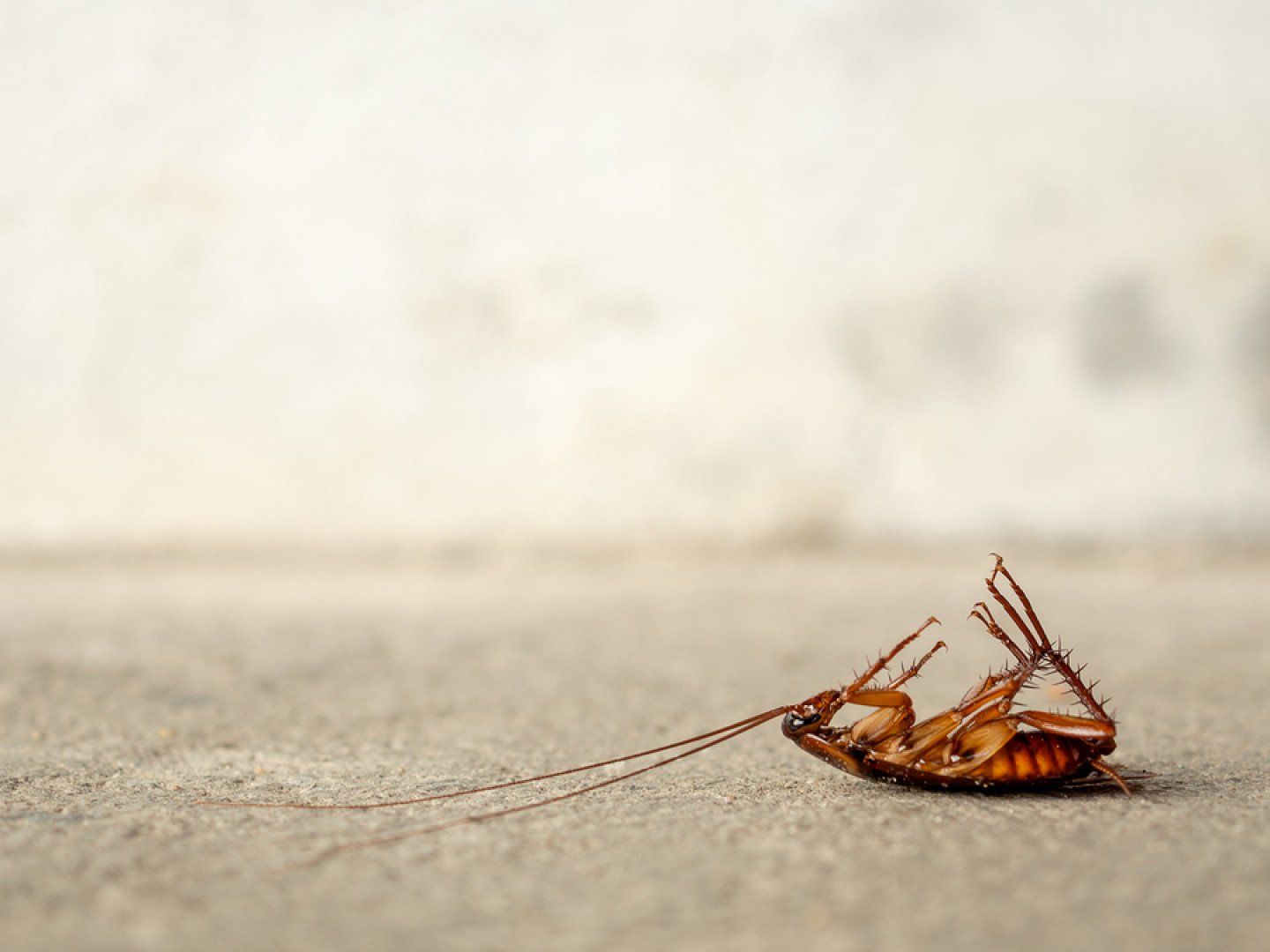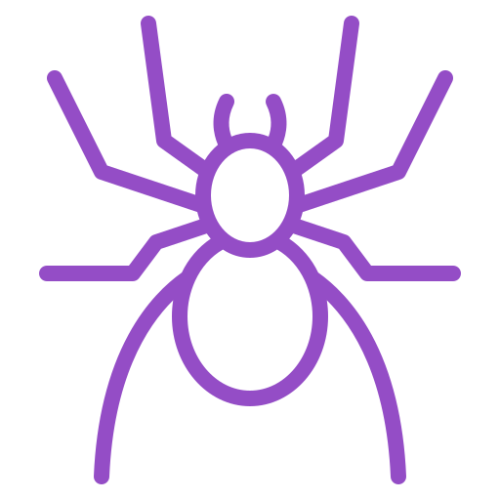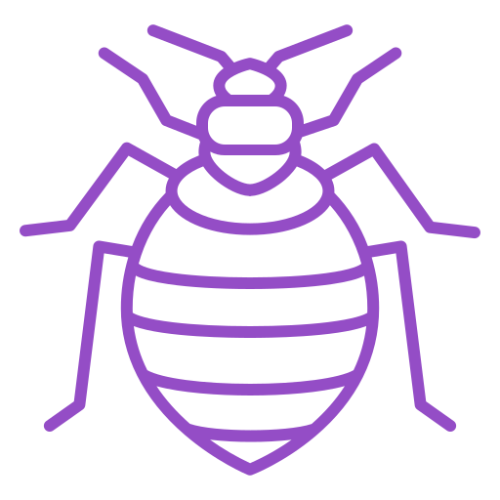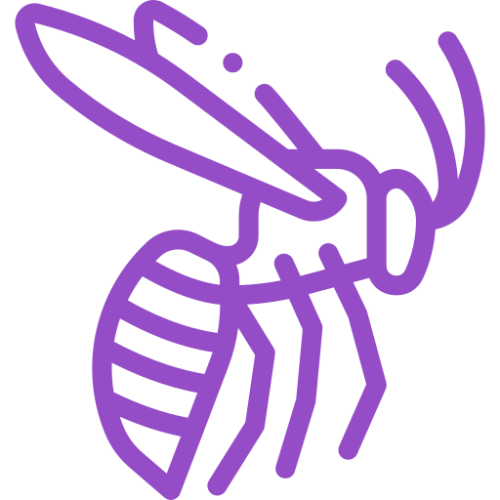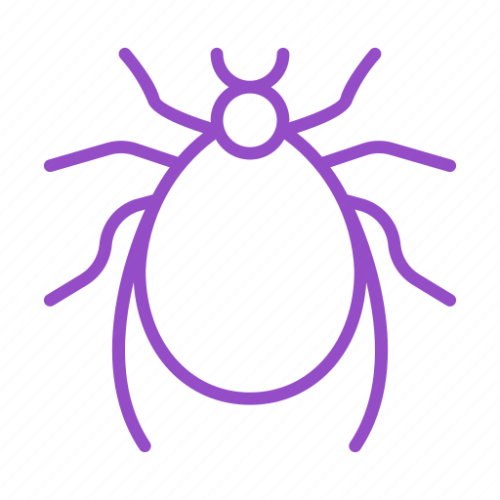Cockroach Control and Exterminator Service
The Best Cockroach Exterminator And Cockroach Control Services Near Me!
Cockroaches are one of the most common house pests in the Georgia area. They're also one of the most difficult type of pests to treat and remove. When your home is infested with roaches, these creepy crawlers will make their way to your food, water and belongings. Not only do they make most people skin crawl, but they also carry bacteria that can harm you and your family.
Don't risk your family's health. If your home has a roach problem, call Smartgreen Pest and Mosquito Control today to schedule your roach control service in Kennessaw, Woodstock, Athens, Atlanta, GA or the surrounding areas.
We Provide Roach Control and The Following Services:
SmartGreen Pest and Mosquito Control is dedicated to exterminating and preventing pest infestations on your property. Our services eradicate the most common and even uncommon pest types. You can count on us for:
Trust SmartGreen Pest and Mosquito Control exterminators in Woodstock, Kennesaw, GA and surrounding areas to get rid of all types of insects around your property. Call (404) 937-7088 today to request eco friendly pest control at your home or office.
Understanding Cockroaches: Habits, Lifecycle, and Why They Infest
Cockroaches have been around for millions of years and have adapted to survive in various environments. Understanding their habits and lifecycle is crucial in effectively controlling and eliminating them from your home. In this section, we will delve into the fascinating world of cockroaches, exploring their habits, lifecycle, and the reasons why they infest our living spaces.
Habits of Cockroaches
Nocturnal Behavior
Cockroaches are primarily nocturnal creatures, preferring to come out and search for food and water during the nighttime hours. They are adept at hiding during the day, making it challenging to spot them.
Omnivorous Diet
These resilient pests are opportunistic feeders and will consume almost anything. They are known to feed on organic matter, including food scraps, garbage, paper, glue, and even other insects. Their ability to survive on a wide range of food sources contributes to their survival and infestation potential.
Rapid Reproduction
Cockroaches have a remarkable ability to reproduce quickly. A single female cockroach can produce hundreds of offspring in her lifetime. Their fast reproductive rate makes it crucial to address an infestation promptly to prevent it from spiraling out of control.
Cockroach Lifecycle
Understanding the lifecycle of a cockroach is essential in combatting infestations. Cockroaches go through a three-stage lifecycle: egg, nymph, and adult.
Egg Stage
Female cockroaches lay eggs in protected areas, such as cracks, crevices, or hidden corners. These eggs are enclosed in a protective casing called an ootheca. Depending on the species, the incubation period can vary from a few weeks to several months.
Nymph Stage
Once the eggs hatch, cockroach nymphs emerge. Nymphs resemble adult cockroaches but are smaller and lack wings. They go through several molting stages, shedding their exoskeleton as they grow. Nymphs require regular access to food and water to survive and develop into adults.
Adult Stage
After undergoing several molting stages, the nymphs reach adulthood. Adult cockroaches have fully developed wings and reproductive capabilities. They can live for several months to a few years, depending on the species and environmental conditions.
Why Cockroaches Infest Homes
Cockroaches infest homes due to a combination of factors, including the availability of food, water, and shelter. Understanding why they are attracted to our living spaces can help us take proactive measures to prevent infestations.
Food Sources
Cockroaches are attracted to easily accessible food sources. They can feed on crumbs, food residue, and even pet food left out in the open. Poor food storage practices and inadequate cleaning can create an inviting environment for these pests.
Moisture and Water
Cockroaches require water to survive. They are attracted to areas with moisture, such as leaky pipes, damp basements, and standing water. Ensuring proper plumbing maintenance and reducing excess moisture can help deter them from infesting your home.
Clutter and Hiding Places
Cockroaches prefer dark, cluttered areas where they can hide and feel secure. Cluttered basements, storage areas, and piles of newspapers or cardboard provide ideal hiding spots for cockroaches to breed and multiply.
Understanding the habits, lifecycle, and reasons why cockroaches infest homes lays the foundation for effective control and prevention strategies. In the following sections, we will explore preventive measures, methods of identification, and the removal of these pesky pests.
Prevention: How to Keep Your Home Cockroach-Free
Preventing cockroaches from infesting your home is the first line of defense against these resilient pests. By implementing effective prevention strategies, you can significantly reduce the risk of a cockroach infestation. In this section, we will explore various measures you can take to keep your home cockroach-free.
Why Prevention is Essential
1Health Risks
Cockroaches are known carriers of disease-causing pathogens such as bacteria, viruses, and parasites. They can contaminate food and surfaces, posing health risks to you and your family. Preventing their entry into your home helps protect against potential health hazards.
Cost and Inconvenience
Dealing with a cockroach infestation can be costly and time-consuming. It may require professional pest control services, repairs to damaged items, and extensive cleaning. By focusing on prevention, you can save yourself from the inconvenience and expenses associated with an infestation.
Common Attractants for Cockroaches
Food Sources
Cockroaches are attracted to easily accessible food sources. To prevent infestations, it is essential to:
- Store food in airtight containers
- Clean up food and drink spills immediately
- Avoid leaving pet food out overnight
- Regularly clean kitchen appliances and surfaces
Moisture and Water
Cockroaches require water to survive, making areas with excess moisture attractive to them. To minimize their attraction and access to water:
- Fix any leaky pipes or faucets
- Ensure proper drainage in bathrooms and kitchens
- Use dehumidifiers in damp areas
- Wipe down sinks and countertops to remove standing water
Clutter and Hiding Places
Cluttered and untidy areas provide ideal hiding spots and breeding grounds for cockroaches. To reduce their hiding places:
- Declutter your home, keeping storage areas organized
- Dispose of cardboard boxes or unused items
- Store items off the floor and away from walls
- Regularly clean and vacuum hard-to-reach areas
Proper Sanitation and Housekeeping Practices
Maintaining proper sanitation and housekeeping practices is crucial in preventing cockroach infestations. Here are some key practices to incorporate:
Regular Cleaning
Regularly clean your home, paying extra attention to areas that are prone to food debris and moisture. Sweep, mop, and vacuum floors, and wipe down countertops and surfaces with disinfectants.
Proper Garbage Disposal
Dispose of garbage promptly in sealed containers. Clean and deodorize your trash cans regularly to eliminate potential food sources for cockroaches.
Sealing Entry Points
Inspect your home for potential entry points such as gaps, cracks, and holes in walls, windows, and doors. Seal these openings using caulk or weatherstripping to prevent cockroaches from entering.
By prioritizing prevention, you can create an environment that is less attractive to cockroaches, reducing the likelihood of an infestation. In the next section, we will explore how to identify a cockroach infestation and the different types of cockroaches you may encounter in your home.
Identification: Recognizing a Cockroach Infestation
Identifying a cockroach infestation is crucial for taking timely action and implementing effective control measures. In this section, we will discuss how to recognize the signs of a cockroach infestation, the different types of cockroaches you may encounter, and where to look for them in your home.
Signs of a Cockroach Infestation
Live Cockroach Sightings
The most obvious sign of a cockroach infestation is actually seeing live cockroaches scurrying around your home, especially during nighttime when they are most active. If you spot one or more cockroaches, it is a strong indication of an infestation.
Droppings
Cockroach droppings, also known as frass, resemble small black or brown specks and may be found in areas where cockroaches frequent, such as cabinets, countertops, and behind appliances. These droppings can be a significant sign of an infestation.
Egg Casings
Cockroaches lay their eggs in protective casings called oothecae. These casings are often brown or reddish-brown in color and have a capsule-like shape. Finding discarded egg casings in areas like closets, basements, or hidden corners is a clear indication of a breeding population.
Musty Odor
Cockroaches emit a strong, musty odor, especially in larger infestations. If you notice a distinct and unpleasant smell in specific areas of your home, it may be a sign that cockroaches are present.
Types of Cockroaches
There are several common types of cockroaches that may infest homes. Understanding the characteristics of each can help with proper identification and targeted control methods. Here are some prevalent species:
German Cockroach
German cockroaches are small, light brown or tan-colored cockroaches with two dark parallel stripes on their pronotum (the shield-like structure behind the head). They are commonly found in kitchens and bathrooms.
American Cockroach
American cockroaches are larger cockroaches, reddish-brown in color, with a distinctive yellowish figure-eight pattern on the back of their heads. They are often found in dark, damp areas such as basements and sewers.
Oriental Cockroach
Oriental cockroaches are dark brown or black in color and have a shiny appearance. They are commonly found in cool, damp areas such as basements and crawl spaces.
Brown-banded Cockroach
Brown-banded cockroaches are smaller in size, light brown, and have distinctive light-colored bands across their wings and abdomen. They prefer warm and dry environments and can infest various areas of the home.
Where to Look for Cockroaches
Cockroaches prefer dark, warm, and secluded areas. Knowing where to look for them can help you identify an infestation early. Here are common areas to inspect:
Kitchen and Bathroom
Check behind and under appliances, such as refrigerators, stoves, and dishwashers. Inspect cabinets, pantries, and sinks for signs of cockroaches.
Basements and Crawl Spaces
These areas are often damp and provide ideal conditions for cockroach infestations. Examine corners, cracks, and crevices for signs of activity.
Wall Voids and Utility Areas
Cockroaches may enter wall voids and utility areas through small openings. Inspect these areas, especially near pipes, electrical outlets, and vents.
By familiarizing yourself with the signs of a cockroach infestation, the different types of cockroaches, and where to look for them, you can take prompt action to control and eliminate these pests. In the next section, we will explore effective methods for removing cockroaches from your home, including do-it-yourself approaches and professional pest control services.
Removal: How to Get Rid of Cockroaches
When faced with a cockroach infestation, it is crucial to take immediate action to remove these pests from your home. In this section, we will discuss various methods and approaches for effectively getting rid of cockroaches. Whether you prefer do-it-yourself methods or seek professional assistance, we will cover the necessary steps to eliminate these unwanted intruders.
DIY Cockroach Control Methods
Sanitation and Cleaning
Maintaining proper sanitation and cleanliness is the foundation of any cockroach control strategy. Follow these steps:
- Clean up food and drink spills immediately.
- Store food in airtight containers.
- Regularly clean countertops, floors, and other surfaces.
- Vacuum and sweep regularly, paying attention to hard-to-reach areas.
Natural Remedies and Home Remedies
Several natural and home remedies can help repel or kill cockroaches. These include:
- Using boric acid or diatomaceous earth in infested areas.
- Creating homemade cockroach baits using boric acid and sugar.
- Applying essential oils such as peppermint, lavender, or tea tree oil as natural repellents.
Cockroach Traps
Cockroach traps can be effective in capturing and monitoring cockroach activity. They can be purchased or made at home using sticky traps or jars with bait placed inside.
Professional Pest Control Services
If the infestation persists or is severe, it may be necessary to seek professional pest control services. Here are the steps involved:
Inspection
A licensed pest control professional will conduct a thorough inspection of your home to identify the extent of the infestation and locate potential hiding spots.
Treatment Plan
Based on the inspection findings, the professional will develop a customized treatment plan that may include:
- Applying targeted insecticides or baits in infested areas.
- Implementing barrier treatments to prevent further infestations.
- Conducting follow-up visits to assess the effectiveness of the treatment.
Preventive Measures
Professional pest control services often include recommendations for preventive measures to minimize the risk of future infestations. These may include sealing entry points, improving sanitation practices, and reducing potential attractants.
Safe Use of Pesticides
If you choose to use pesticides yourself, it is essential to prioritize safety. Follow these guidelines:
- Read and follow the label instructions carefully.
- Use appropriate protective equipment, such as gloves and masks.
- Keep children and pets away from treated areas.
- Store pesticides securely and out of reach.
Remember, if you are unsure or uncomfortable using pesticides, it is best to consult a professional.
By implementing do-it-yourself methods, seeking professional assistance when needed, and practicing safe pesticide use, you can effectively remove cockroaches from your home. In the next section, we will explore how to maintain a cockroach-free home post-removal to prevent future infestations.
Post-Removal: How to Maintain a Cockroach-Free Home
After successfully eliminating a cockroach infestation from your home, it is crucial to implement preventive measures and maintain a clean environment to prevent future infestations. In this final section, we will discuss the steps you can take to ensure a cockroach-free home and minimize the risk of reinfestation.
Continued Sanitation
Maintaining proper sanitation practices is key to preventing cockroaches from returning. Follow these guidelines:
- Clean up food and drink spills immediately.
- Store food in sealed containers.
- Regularly clean countertops, floors, and other surfaces.
- Empty trash regularly and keep trash cans clean.
- Keep pet food in sealed containers and clean up any leftovers.
Regular Inspections
Perform regular inspections to identify any signs of cockroach activity or potential entry points. Here's what you can do:
- Check dark, secluded areas such as cabinets, closets, and basements.
- Inspect cracks, crevices, and gaps in walls, windows, and doors.
- Monitor traps or bait stations for any signs of cockroach activity.
When to Call a Professional
If you notice any signs of a cockroach infestation despite your preventive efforts, it may be necessary to seek professional assistance again. Consider these situations:
- If the infestation recurs or becomes severe.
- If you are unable to identify the source or extent of the infestation.
- If you are unsure about the appropriate control methods to use.
Professional pest control services can help identify and address the root cause of the infestation, providing effective solutions and ongoing pest management.
Educating Family Members and Neighbors
Educate your family members and neighbors about the importance of cockroach prevention and the role they play in maintaining a cockroach-free environment. Encourage them to follow good sanitation practices and report any signs of infestation promptly.
Long-Term Prevention Strategies
Implement long-term prevention strategies to minimize the risk of future infestations. Consider the following:
- Seal any cracks, gaps, or openings in walls, windows, and doors.
- Install door sweeps and weatherstripping to prevent cockroaches from entering.
- Keep your home well-ventilated and free of excess moisture.
- Regularly clean and declutter storage areas.
- Consider professional pest control services for regular inspections and preventive treatments.
By incorporating these post-removal practices into your routine, you can maintain a cockroach-free home and reduce the chances of another infestation.
With the knowledge gained from understanding cockroach habits, implementing preventive measures, identifying infestations, and effectively removing cockroaches, you are now equipped with the tools to combat and prevent future infestations. Stay vigilant, follow good hygiene practices, and seek professional help when needed to keep your home free from these unwanted pests.
Do You Have a Cockroach Problem?
Spotting a roach problem is not always as simple as it sounds. In fact, you might not realize your home or office has been infected until the infestation has grown out of control. To catch the roach issue before it becomes a big problem, look for the following three signs:
- Small fecal droppings the size of coffee beans
- A foul odor in your home or office
- Roach eggs in dark spaces of your property (cabinets, basements and attics)
If you notice any of these signs or see roaches roaming your home, call Smartgreen Pest and Mosquito Control at
(404) 937-7088

